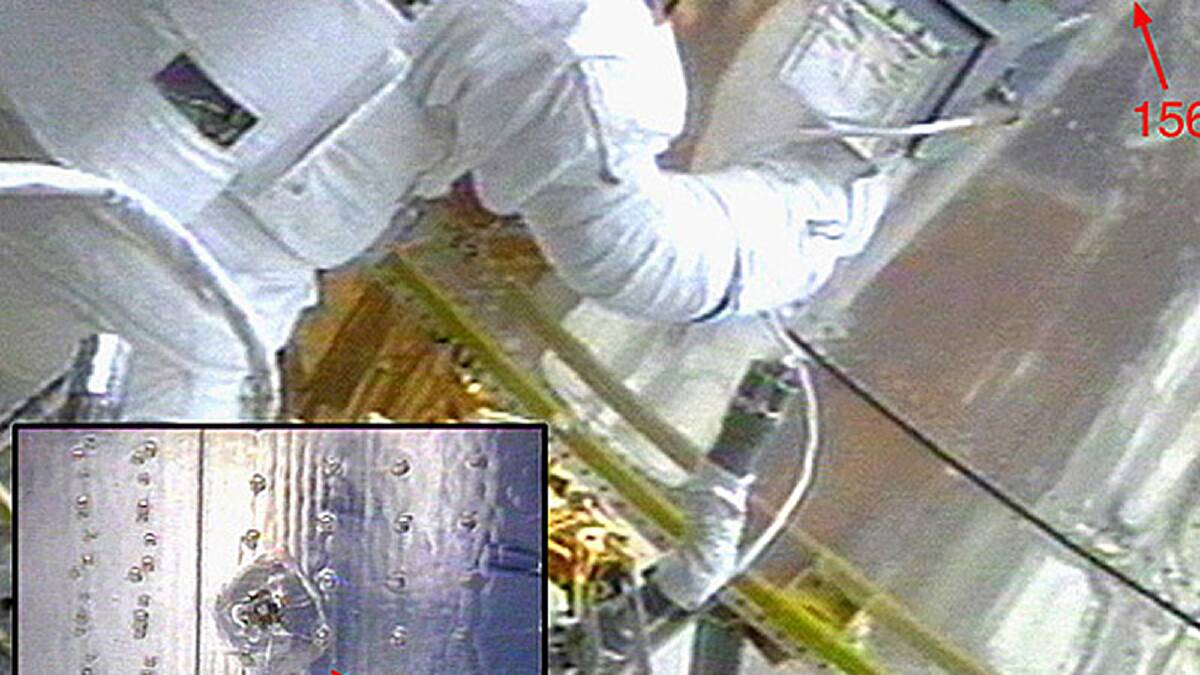
Orbital debris damage seen during Hubble Space Telescope repairs. Photo: NASA

This is the main propellant tank of the second stage of a Delta 2 launch vehicle which landed near Georgetown, TX, on 22 January 1997. Photo: NASA

Solar Max satellite repair. Several metal louvers and thermal blankets were returned from the Solar Max satellite. Returned surfaces are a source of information on sub-millimeter sized orbital debris.

This 30 kg titanium pressurant tank also survived the reentry of the Delta 2 second stage on 22 January 1997 but was found farther downrange near Seguin, TX. Photo: NASA

A close-up view of a panel from the Long Duration Exposure Facility (LDEF) spacecraft.

Mir Environmental Effects Payload (MEEP) Orbital Debris Collector (ODC) was exposed to the space environment for 18 months. Photo: NASA

Window pit from orbital debris on STS-007. Photo: NASA

Space Shuttle window being inspected for orbital debris impacts. Photo: NASA

On 21 January 2001, a Delta 2 third stage, known as a PAM-D (Payload Assist Module - Delta), reentered the atmosphere over the Middle East. Photo: NASA

View of an orbital debris hole made in the panel of the Solar Max experiment.

Solid rocket motor (SRM) slag. Aluminum oxide slag is a byproduct of SRMs. Photo: NASA

STS-092 vertical stabilizer damage from orbital debris on board the space shuttle. Photo: NASA

After in space repairs to the Hubble Space Telescope, the returned parts show many orbital debris impacts. Photo: NASA

An impact that completely penetrated the antenna dish of the Hubble Space Telescope. Photo: NASA
More than 14,000 individual pieces of space junk larger than 10cm are being tracked orbiting the Earth with about 3279 of those pieces former payloads such as defunct satellites which are now giant death traps for space travellers and dangers even for those on the ground.
Subscribe now for unlimited access.
$0/
(min cost $0)
or signup to continue reading
More from Multimedia
More from Multimedia
More from Multimedia

